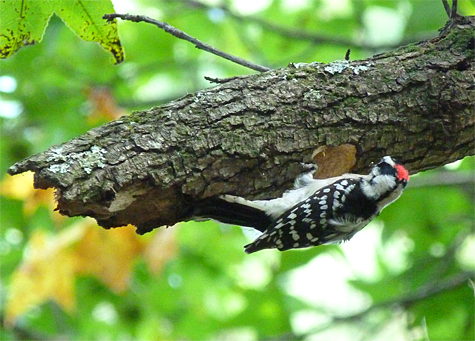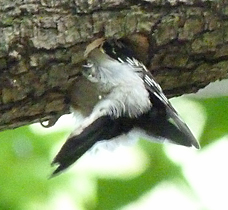If you haven’t noticed the turning leaves, migrant birds passing through, or even the acorns dropping to the ground, perhaps the woodpeckers excavating holes, new holes, in the trees here at the Museum or in your yard will convince you, fall’s here and winter’s not far off.

Besides the holes that woodpeckers drill into trees in spring for the purpose of nesting, they also often excavate holes to roost in during the winter. In fact, they may excavate several roost holes in order to get out of the cold winter nights.

Other birds may use the cavities as well. Chickadees, titmice, and even bluebirds have been known to occupy woodpecker holes in winter. Sometimes, more than one bird will take up residence in a tree cavity. It’s not unusual to have two, three, or even four bluebirds sharing a winter roost.
In order to see exactly who is using the roost may require you getting up very early in the morning, or be at the hole just before the last light of day. The birds leave the roost at first light, and typically zip into the holes at the last minute each night. If more than one bird is using the roost they may collect nearby, in a sort of staging area, before retreating into the cavity.
Happy roost watching!